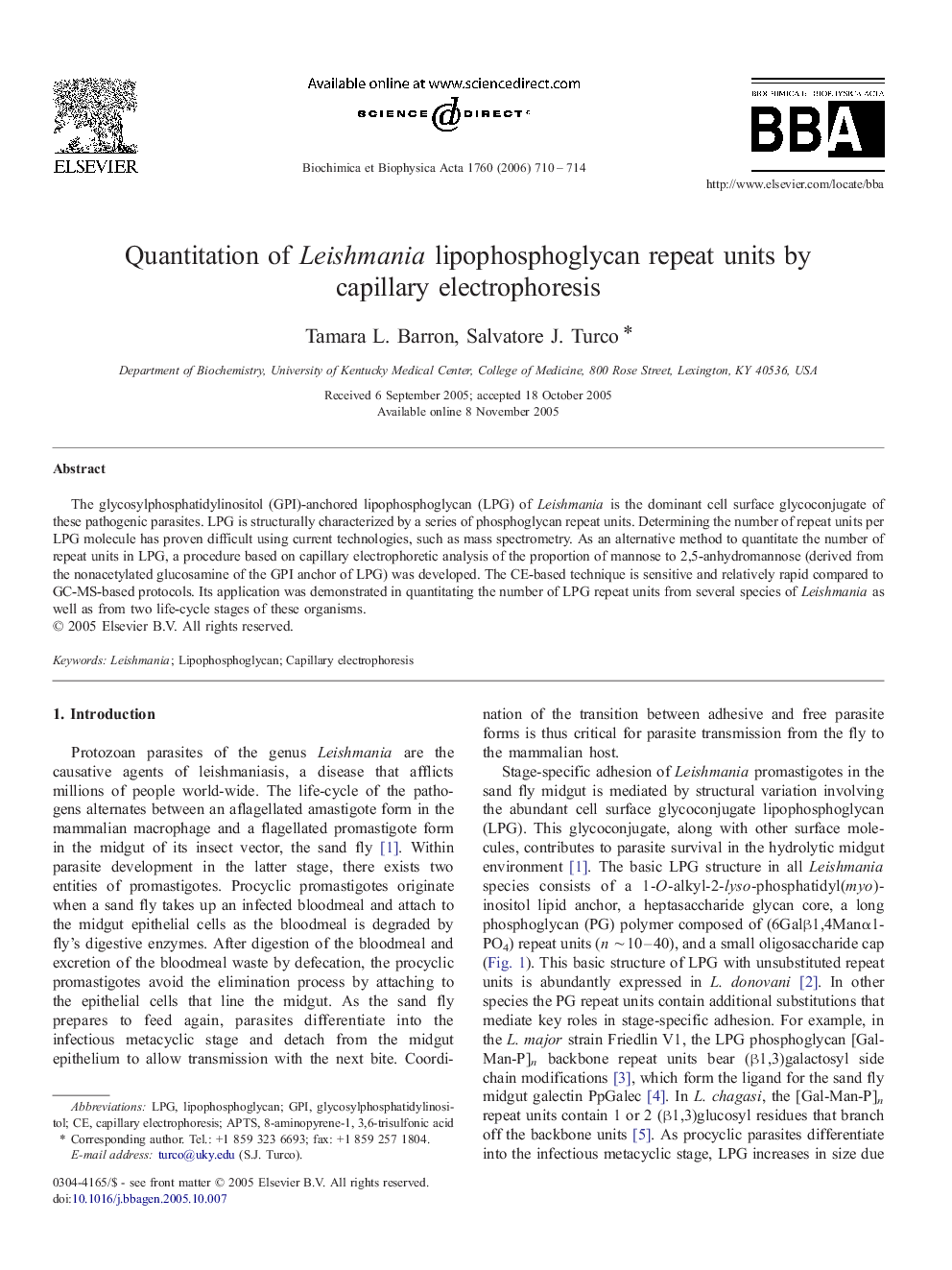| Article ID | Journal | Published Year | Pages | File Type |
|---|---|---|---|---|
| 1948851 | Biochimica et Biophysica Acta (BBA) - General Subjects | 2006 | 5 Pages |
The glycosylphosphatidylinositol (GPI)-anchored lipophosphoglycan (LPG) of Leishmania is the dominant cell surface glycoconjugate of these pathogenic parasites. LPG is structurally characterized by a series of phosphoglycan repeat units. Determining the number of repeat units per LPG molecule has proven difficult using current technologies, such as mass spectrometry. As an alternative method to quantitate the number of repeat units in LPG, a procedure based on capillary electrophoretic analysis of the proportion of mannose to 2,5-anhydromannose (derived from the nonacetylated glucosamine of the GPI anchor of LPG) was developed. The CE-based technique is sensitive and relatively rapid compared to GC-MS-based protocols. Its application was demonstrated in quantitating the number of LPG repeat units from several species of Leishmania as well as from two life-cycle stages of these organisms.
